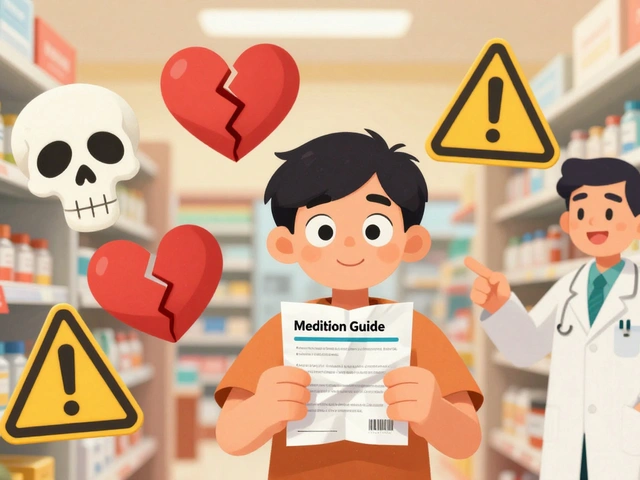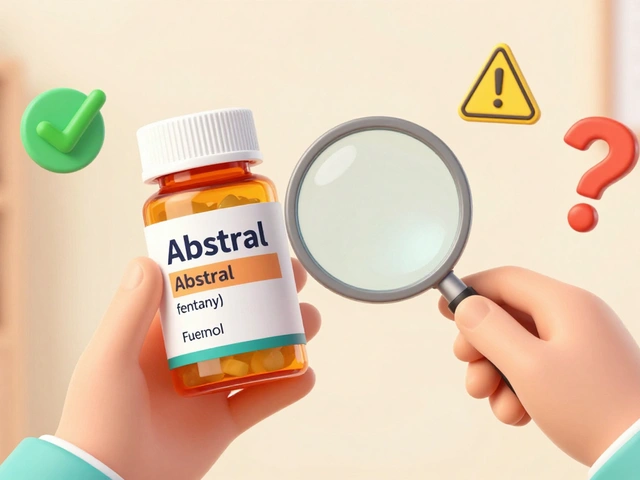TL;DR
- Glycomet is a brand of metformin, a first‑line oral drug for type2 diabetes.
- Start low (500mg once daily) and increase gradually; typical maintenance is 1500‑2000mg/day.
- Common side effects are gastrointestinal - nausea, diarrhoea, metallic taste - usually fade after a few weeks.
- Avoid if you have severe kidney impairment, liver disease, or are pregnant without doctor approval.
- Regular blood‑sugar monitoring and kidney function tests are essential while on Glycomet.
What Is Glycomet and How Does It Work?
Glycomet is simply a branded formulation of metformin, the big‑player in the world of oral diabetes therapy. Metformin belongs to the “biguanide” class and tackles high blood glucose in three main ways:
- Reduced liver glucose production - it tells the liver to dial back its sugar output.
- Improved insulin sensitivity - muscle cells become more responsive, so glucose can slip in more easily.
- Decreased intestinal glucose absorption - less sugar makes it from the gut into the bloodstream.
Because it doesn’t stimulate the pancreas to produce insulin, the risk of low blood sugar (hypoglycaemia) is minimal when Glycomet is used alone. This safety profile makes it a go‑to choice for newly diagnosed type2 diabetics and for those who need an add‑on to other drugs.
Dosage Basics: Starting Low, Going Slow
The key to tolerating Glycomet is a gradual dose‑escalation. Most clinicians follow a step‑up schedule that looks like this:
- Day1‑7: 500mg once daily with the evening meal.
- Day8‑14: Increase to 500mg twice daily (morning+evening).
- Day15‑21: If tolerated, move to 850mg twice daily.
- Beyond week3: Aim for a total daily dose of 1500‑2000mg, split into two doses.
Never jump straight to a high dose; the GI tract needs time to adapt. If you experience persistent nausea or diarrhoea, pause the increase and stay at the last comfortable dose for another week before trying again.
| Formulation | Strength (mg) | Typical Starting Dose | Maximum Daily Dose |
|---|---|---|---|
| Immediate‑Release (IR) tablets | 500 | 500mg once daily | 2550mg |
| Extended‑Release (XR) tablets | 500 | 500mg once daily | 2000mg |
| Extended‑Release (XR) tablets | 1000 | 1000mg once daily | 2000mg |
Extended‑release (XR) versions let you stay on a single daily dose, which many find easier on the stomach. However, the XR tablets are a bit pricier, so insurance coverage can sway the choice.
Side Effects, Interactions, and Safety Checks
Glycomet is safe for most people, but it isn’t a “set‑and‑forget” pill. Here’s what to watch for:
- Gastrointestinal upset - nausea, abdominal cramping, diarrhoea, and a metallic taste. These usually settle within 2‑4weeks.
- Lactic acidosis - a rare but serious build‑up of lactate. Symptoms include muscle pain, rapid breathing, and extreme fatigue. Risk spikes if kidney function is poor.
- VitaminB12 deficiency - long‑term metformin can lower B12 absorption. Check levels annually if you’ve been on the drug >5years.
Key drug interactions:
- Cimetidine, ranitidine - can raise metformin blood levels.
- Contrast dyes used in imaging - pause Glycomet 48hours before and 48hours after the procedure to protect the kidneys.
- Other glucose‑lowering agents - may increase hypoglycaemia risk, especially sulfonylureas or insulin.
Before each refill, your doctor should order a serum creatinine test or estimate glomerular filtration rate (eGFR). The typical cut‑offs are:
- eGFR≥60ml/min/1.73m² - safe to start.
- eGFR45‑59 - start at 500mg daily, monitor closely.
- eGFR<30 - contraindicated; another drug is needed.

Practical Tips for Getting the Most Out of Glycomet
Here are some real‑world tricks that help patients stay on track:
- Take Glycomet with food - a solid meal reduces stomach irritation.
- Split the dose - morning and night if you’re on IR tablets. XR can be taken with dinner.
- Hydrate well - plenty of water helps kidneys flush the drug.
- Track your glucose - a simple log (paper or app) shows whether the dose is working.
- Watch for weight loss - metformin often leads to modest weight reduction; if it’s too rapid, discuss with your clinician.
If side effects linger despite dose adjustments, ask your doctor about a slow‑release formulation or a short trial of probiotic supplements - some patients report reduced diarrhoea.
Mini‑FAQ: Quick Answers to Common Concerns
- Can I take Glycomet if I’m pregnant? Only under strict medical supervision. Metformin is sometimes used for gestational diabetes, but the decision balances maternal benefit against fetal data.
- Does Glycomet cause weight gain? No, it’s weight‑neutral or mildly weight‑lossing for most users.
- Do I need to stop Glycomet before surgery? Usually not, unless you’ll receive iodinated contrast or the surgery involves major kidney stress.
- Can I drink alcohol while on Glycomet? Moderate alcohol is okay, but heavy drinking raises lactic‑acidosis risk.
- What if I miss a dose? Take it as soon as you remember if it’s within 8hours; otherwise skip and resume the regular schedule. Don’t double‑dose.
Next Steps: How to Start, Adjust, or Switch
Whether you’re a brand‑new patient or thinking about changing formulations, follow this decision tree:
- New diagnosis - ask your GP for immediate‑release Glycomet 500mg with dinner.
- After 2weeks, if tolerated, add a 500mg morning dose.
- If GI upset persists, switch to extended‑release 500mg once daily.
- Reach target HbA1c? - maintain current dose and schedule quarterly labs.
- HbA1c still high? - discuss adding a second agent (e.g., a DPP‑4 inhibitor) rather than jumping to higher metformin doses.
Always keep a copy of recent lab results when you visit a new pharmacy or specialist - it speeds up any dosage changes.
By staying informed, monitoring labs, and working closely with your healthcare team, Glycomet can become a reliable part of your diabetes management plan without derailing your daily life.










Brian Bell
Been on Glycomet for 3 years now. The GI stuff was brutal at first, but now it's like a ghost. I take mine with dinner and barely notice it. 🙌
Nathan Hsu
I've been using Glycomet XR since 2021... and yes, the B12 deficiency is real! I had to start injections last year... I didn't know until my fingers went numb... please, please, get your labs done annually... it's not optional...
Ashley Durance
People who start at 1000mg on day one deserve what they get. This isn't a vitamin. It's a pharmacological intervention. If you can't follow a 7-day titration, you shouldn't be on it.
Scott Saleska
Just a heads up - if you're on metformin and you ever get sick with the flu or a stomach bug, don't just power through. Dehydration + metformin = lactic acidosis risk. I learned this the hard way. Hospital stay. Not fun.
Ryan Anderson
XR tablets changed my life. 🌟 No more midday nausea. Just pop one in the morning. And yes, it’s pricier - but my stomach is worth it. Also, check your eGFR every 6 months. Your kidneys will thank you.
Eleanora Keene
I know it’s frustrating when the side effects hit, but you’re not alone. I started at 500mg and cried through week two. But I kept going. Now I’m off insulin. You’ve got this. 💪
Joe Goodrow
Americans always want the easy way. Take the cheap IR version. Don’t whine about stomach issues. My grandfather took metformin in 1978 and never complained. We don’t need fancy XR.
Don Ablett
The pharmacokinetic profile of metformin is well documented in the Journal of Clinical Pharmacology, 2018. The extended-release formulation demonstrates a 22% reduction in peak plasma concentration variance compared to immediate-release. This correlates with reduced GI intolerance. Data available upon request.
Kevin Wagner
Metformin is the OG of diabetes meds - the OG that doesn't make you crash, doesn't make you gain weight, and doesn't cost a fortune. It’s the superhero in a white pill. If your doc won’t start you on it, find a new doc. 💥
Anjan Patel
I’ve been on this for 12 years. My cousin’s wife took it and got kidney failure. She was 42. Now she’s on dialysis. You think this is safe? You think your doctor knows what they’re doing? They’re just following the script. Wake up.
Scarlett Walker
I started on 500mg and thought I was gonna die. Then I started taking it with a banana. Game. Changer.
Hrudananda Rath
The fact that this post doesn't mention the WHO's 2023 guidelines on metformin use in prediabetes is a glaring omission. One would expect a 'guide' to be comprehensive. As it stands, this is amateur hour.
gent wood
I’ve been on Glycomet for 8 years. My HbA1c is 5.4. I’ve never had a low. I take it with food. I get my kidneys checked every 6 months. It’s not magic. It’s medicine. And it works.
Brian Bell
I just saw someone say they had kidney failure from metformin. That’s not how it works. You get kidney failure because you’re diabetic. Metformin just shows you you’ve got it. Don’t blame the medicine for your condition.